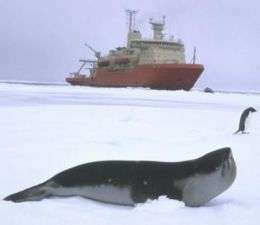Texas researchers and educators head for Antarctica

It’s been more than 100 years since anyone has journeyed to this section of Antarctica’s Amundsen Sea, but that is about to change. Next month five UTSA researchers and a Boerne High School science teacher will join a crew of 22 researchers from several countries to set sail on a two month expedition.
The trip, funded by a $533,000 National Science Foundation (NSF) research grant to UTSA, is designed to study the relationship of sea ice and the Antarctic environment. UTSA’s research team will depart Sept. 1 from Punta Arenas, Chile.
The expedition, sponsored by the Arctic Research Consortium of the United States (ARCUS), is one of 20 annual trips planned involving a teacher accompanying a research expedition. ARCUS coordinates NSF’s PolarTREC educational program, designed to bring educators and researchers together to explore, collaborate and experience life in the Polar Regions.
“We hope that once these teachers get this hands-on experience they will be better equipped to teach science in the classroom and convey their sense of excitement to their students, especially after going through this amazing experience,” said Janet Warburton, PolarTREC program manager.
Leading UTSA’s efforts is world-renowned sea ice expert Stephen Ackley, research associate professor of earth and environmental science, who has made more than a dozen trips to the Arctic and Antarctic regions. Ackley’s outstanding contributions to sea ice research were recognized in 2004 when the Antarctic geographic feature, Ackley Point, was named after him by the U.S. Board of Geographical Names.
“We are going to investigate the processes of how sea ice forms, moves, decays and interacts with the environment, said Ackley. “It’s highly exploratory and since the ice is so tightly packed this time of year, no one has attempted to travel this deep into the Amundsen Sea during winter since 1899 when the Belgica was trapped there. The sea was named after one of the explorers to survive that expedition, Roald Amundsen, who later made the first trip to the South Pole in 1911.”
Accompanying Ackley on the trip aboard the U.S. icebreaker N.B. Palmer will be four UTSA undergraduate, graduate, and doctoral degree students. The UTSA researchers will conduct numerous investigations including observing marine and mammalian life on and under the ice and determining how the sea ice interacts with the ocean and atmosphere. Joining the UTSA team will be 43-year-old Boerne High School science teacher Sarah Anderson. Anderson was chosen from among 150 educators that submitted applications to the PolarTREC program.
“I’ll be interacting regularly by phone and e-mail with my students so they will know about all the research we are conducting aboard the ship,” said Anderson. “I also plan on posting a journal online so teachers and students will be able log on and see notes and photos from Antarctica.”
The trip to Antarctica is the second one in less then a year involving UTSA researchers, last December UTSA assistant professor of earth and environmental science Hongjie Xie and doctoral student Burcu Cicek were part of a three-week international expedition of scientists and educators trying to determine if global warming was affecting the South Pole.
Source: University of Texas at San Antonio



















